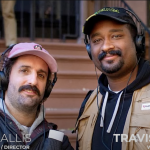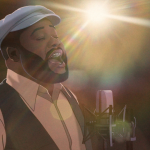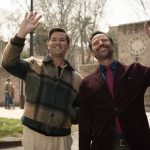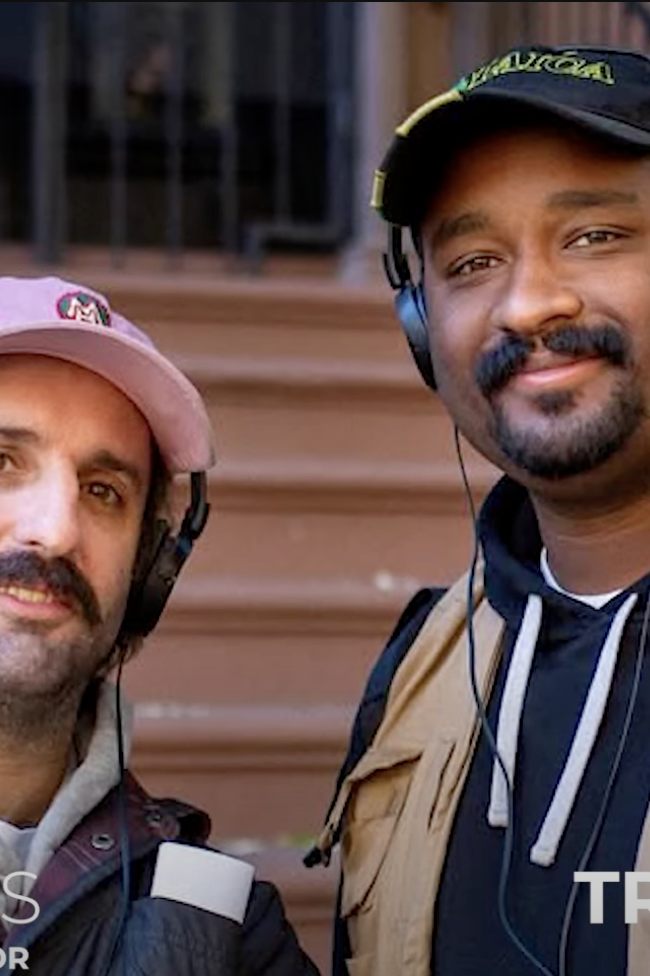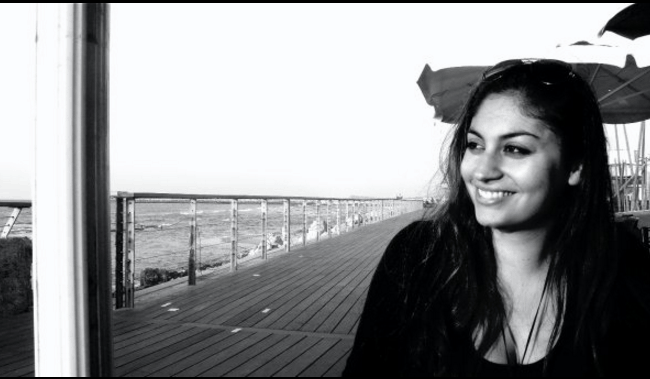A Conversation with Arnaud Desplechin (SPECTATEURS!)
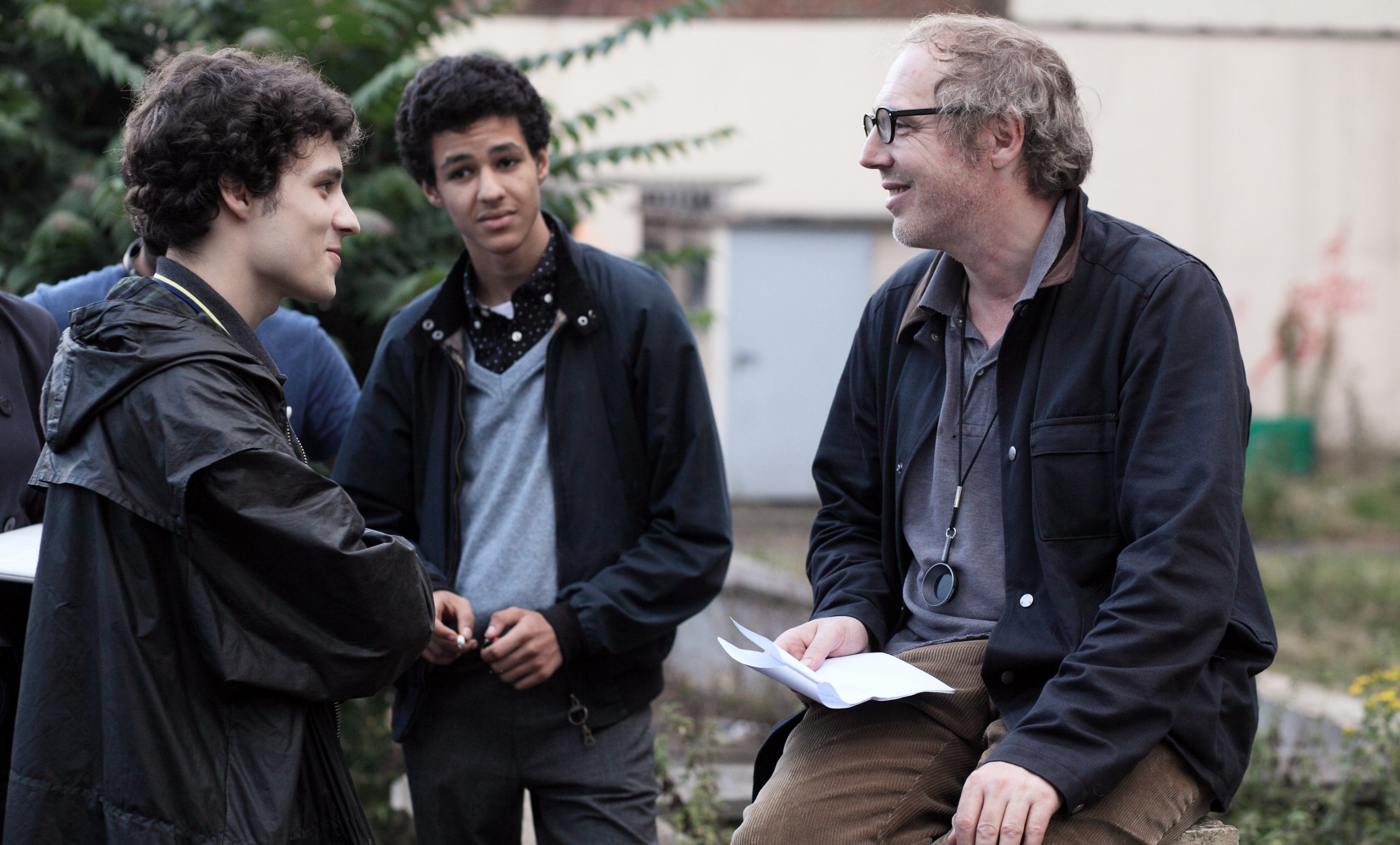
“You know, you’re Irish, so when I’m saying Dédalus you’re probably thinking Joyce.” It’s early December in Avelino and Arnaud Desplechin isn’t really talking A Portrait of the Artist as a Young Man. The French director’s latest, Spectateurs!, reintroduces the his own Dédalus: an intrepid cinephile who already appeared at various ages, occasionally in the form of Mathieu Amalric, in My Sex Life… or How I Got Into an Argument (1998), A Christmas Tale (2008) and My Golden Days (2015). In a time when filmmakers the world over have been releasing their own love letters to cinema, it feels right to have the character back.
In Spectateurs!, a hybrid film that features narration from Amalric as well as a wide range of clips from film history, it’s not just Paul’s age that varies: “I thought it would be nice to end the character’s journey with Dédalus being 8, being 15, being a girl, being a young student, all these different incarnations, I love that Idea,” Desplechin explains, with typical elan, “And then meeting Mathieu Amalric at the end, smiling to the new Paul Dédalus and thinking, I’ve been that character. I thought it was just perfect.” We were meeting before the director’s masterclass at the cinema Eliseo, a repurposed public building with an interior like a gymnasium on one of the city’s main drags. As we talked, groups of local school kids flocked in. It wasn’t hard to sense a bit of Paul’s curiosity in the air.
Founded by Pier Paulo Pasolini in 1975, the Laceno D’Oro festival turned 50 last year with Desplechin as its guest of honor. For a lively half hour, edited and condensed for clarity, the director talked about his work and passions, why so many filmmakers are writing elegies to the artform these days, getting permission to use a clip from Tom Cruise’s stunt man, and what’s up next. When it comes to talking cinema, few do it better.
Hammer to Nail: Before seeing Spectateurs! yesterday, I watched another great film, Beastiari Herbari Lepadari. It played in Venice this year. Have you heard about it?
Arnaud Desplechin: Ah the documentary! Three hours long, I heard that it was great.
HtN: Yes! And interestingly, another film, like your own, that begins with Muybridge. What is it about those images that remains so elusive to us?
AD: It’s strange, because Muybridge wanted to stop time. Muybridge was one of the inventors of cinema? Wrong. He wanted the contrary of cinema. He wanted to stop the movement, or understand the movement, whereas the pleasure of cinema is to not understand. to plunge into the movement. Can you remind me, what was the title of this wonderful American film from two years ago with the image from Muybridge, with the black rider on the horse?
HtN: Oh, Nope? Yeah, fantastic.
AD: Fantastic. So, there is still a fascination for these images.
HtN: The sequence sets the tone very nicely for Spectateurs!, this mood of curiosity which lasts to the final shot, where you end on a question mark. Is this the truth of a life in cinema, that it’s a puzzle that can never be solved?
AD: Well, all the good questions are questions without answers, no? Stanley Cavell wrote questions without answers. That was his way of writing. In my film, when Paul Dédalus is a young woman at the bar, she meets a philosopher. What she’s reading is a text from Cavell, who is an American philosopher who wrote a lot about Theroux and Emerson, but also about cinema. I knew him until his last days, when he was still teaching in Boston. He was a terrific writer. This film was built with ideas which were running in my mind for something like 15 years. Issues that I have, questions that I ask myself.
HtN: Do you feel any closer to finding some answers, or do they get further away?
AD: I’m thinking about this chapter with Nancy Hsueh, you know, the question of what is it to recognize the face of someone who is different from you. You know, since I’m a kid, the face of the Native American people was important for me as a film buff. I loved Westerns, so this was a question without an answer. Is Cheyenne Autumn racist or pro-Native American? You don’t have a clear answer to that. How do you acknowledge the people you are filming? This question of acknowledgment is one of the great concerns I have with filmmaking. And here it took the path of mourning for Nancy Hsueh.
HtN: You’ve returned to this character in four features now, each roughly ten years apart, or once a decade. What drew you back to Dédalus this time?
AD: I thought it would be nice to end the journey of Paul Dédalus with Dédalus being 8, being 15, being a girl, being a descendant, being a young student, all these different incarnations, I love that Idea. And then meeting Mathieu Amalric at the end, smiling to the new Paul Dédalus and thinking, I’ve been that character. I thought it was just perfect.
HtN: That sense of inclusivity is really nice. There have been some other love letters to cinema recently, we can maybe talk about them later, but yours feels the least precious to me in some way. Especially in the middle section, where you have people talking to camera, explaining what cinema means to them.
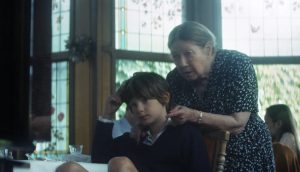
A still from Spectateurs!
AD: It was funny, we were speaking with the DP, he was asking what we wanted to do with that. I said they have to be in the screen, you know. It’s like the Matrix. The white space. Abstract.
HtN: How did you cast it?
AD: I asked a very close friend of mine to select different people. I did’t want specialists or critics or whatever, just people. People who love films or are interested in films, not just film buffs who are full of knowledge. And I want to meet them on the set, you know. During the shoot, because I didn’t know them, I had to offer a lot, I had to give something to each of them to have a real relationship, again this question of acknowledgment. I had to acknowledge them in order to film them. So at the end I was exhausted, because I gave them so much, because they were giving so much. This last girl speaking about the Spielberg musical and the emotion, and this guy talking about the first time he’d been scared. They chose to share these memories with me and I was very grateful.
HtN: How did you go through the selection process of what films you included? I liked that they first modern clip we see is Age of Innocence. Why start there?
AD: It had to be Scorsese, because he’s our teacher and he’s a student. That’s why he had to be first. You know, it’s still a mystery to me, because it’s not about my taste, it’s about the films we shared in our lives. If there is one thing that I love in cinema, it’s that there is no scale of ideas. If I go to the theatre, a great play’s a great play and a humble play’s a humble play. But there is nothing like a humble film or a great film, it’s an absolute democracy. So, I didn’t want to make a film of “good taste” or “bad taste”, you can have John Woo and Claude Lanzmann, all these films are equal and they can have a dialogue between them. During the edit, I realized there was just one Japanese movie and four Chinese movies, when I have much more knowledge about Japanese cinema. I realized it was not just my films, it was images that I wanted to share with the audience, images that don’t belong to me, but to all of us. Like Travolta getting the bomb in his stomach, you know, in the train?
HtN: Was that Broken Arrow?
AD: Yeah, Broken Arrow! But this was a nightmare for the producer. When we started the film, I told Charles Gillibert that I want to rain clips on the audience. We had 52 clips I think, so we made the budget, but the problems arrived during post. Sometimes these were lovely problems. It was important to have Minority Report. This is one of my favorite Spielberg films, and because of the link to Truffaut and the flying man in Fahrenheit 451. So, I had to write a letter to Spielberg and he was really nice, you know, It’s a French guy with no money, let’s be kind with him. But after that we realized we had to have the authorization of Tom Cruise. Ouch. So, we wrote a letter to Tom Cruise and his agent, but then we realized we had to have the authorization of the stuntman, because he appears on screen. Each clip had the same kind of issues, so it was exhausting for the producer but it was great fun to do.
HtN: And how exhausting was the edit? The film seems to expand and contract at times, and there’s so much in there, yet you still keep it down to a lean 90 minutes. Impressive.
AD: A few weeks before the beginning of the shoot, I said I wanted the film to be a house with several rooms, and to invite the audience in. But then I realized that this could become a maze, which would be a problem as I did not want the spectators to be too lost. Then I thought about a director I admire, Wes Anderson, and I said, Ok, let’s do something similar. You know, with each character introducing themselves to the audience in the beginning of his or her chapter. It is as if I am saying: Ok, you are a bit lost but be I will hold your hand and be with you to the end, and that’s how we will proceed.
HtN: Regarding these other films that I mentioned earlier. I guess Fabelmans and the Sam Mendes film came out around the same time. There was Belfast a bit earlier. Even Roma. Do you feel these films are in conversation in some way?
AD: Yes, and also the Carax movie. I’m thinking of so many films. If I had to select one of them, perhaps the James Gray, Armageddon Time. I saw it three times in the theatre, and then on DVD. I love that film for so many reasons. Perhaps because it’s so close to The 400 Blows. But I think during Covid, all over the world, we all experienced the possibility that one day the theatres wouldn’t exist anymore, and how grateful we were that cinema did exist once. We had this possibility because for a moment, cinema stopped, and we thought after the shutdown that perhaps it would never recover and the audience would never come back. But they did come back. The theatres are still alive. The audience are still there, sharing the idea to see life when it’s bigger.

I don’t fully agree with the Godard line that you bend when you are looking at the TV and raise up when you are looking at the screen, but it’s a great line. It is larger than you and it’s beautiful. So around the world, we began to say thanks for all the gifts we got from the screen.
HtN: A kind of eulogizing in a way?
AD: Sure, it’s a eulogy.
HtN: At the same time, I think your film is hopeful. Are you hopeful for cinema?
AD: Oh, full of hope! You know, I’m coming from a small town, so that’s why, when we started the film with Charles Gillibert, I told him, Ok, I’ll have one scene to praise TV, because without TV I would be dead, you know? Because it was too complicated to go to the big cities to see films, so I saw many films on TV. So I say Thanks TV. And when I see Roma, I say thanks to Netflix. I don’t think there is competition. You know, here I am in Italy where Guadagnino is doing films that are doing well in theatres and is doing TV. You know, where is the competition? I am quite optimistic.
HtN: You mentioned Nope earlier, which I think is a great example of a commercial film that pushed the medium forward.
AD: It was great news for cinema, something so full and so rich. And the film is an absolute mystery. A pure enigma. And the film was a success, people loved it. It is absolutely obscure and they loved it. And look at Tár, which is so obscure too and people loved it. Look at the Glazer movie. Do I like it? Who cares, the others loved it. Audiences are always ready for new experiences, old experiences too. So yes, cinema is quite alive.
HtN: Even Megalopolis has its people.
AD: [Laugh] Is it still cinema? Is it still a film? I don’t know!
HtN: Did you see it in Cannes?
AD: No, I saw it in Paris, but with the actor doing the routine. I saw it properly, as Coppola wanted me to see it.
HtN: A very interesting film.
AD: Yes, very interesting. Some very good sections, some bizarre sections elsewhere, and so daring. It’s an experiment, you know? I had the same feeling as when you go and see experimental theatre. You know that you will remember it for the rest of your days, and you have no idea if you like it or not. You think, I saw that and I’m proud that I saw that. That was my feeling after.
HtN: Is there anything else you’ve seen recently that’s moved you?
AD: I just finished a new feature that I shot in Lyon with Charlotte Rampling and François Civil, so I didn’t have time to go and see films. I was too busy, so I will take my revenge now and go to some theatres. I missed the second Joker. I missed so many films, so I have to recover and be a spectator again.
HtN: Is there anything you can say about your new feature?
AD: I’d like to say one thing. I wrote it with a friend named Kamen Velkovsky, who was born Bulgarian but is American and belongs to the American scriptwriting school, so the experience was so different from French scriptwriters, you know? I was amazed. I never laughed that much with a writer. Usually when you start to write a film you hate each other after two weeks, you want to kill your partner. You are so bitter because your script is not good enough and they’re not helping you etc. But this time it was pure friendship. And this pleasure happened again during the shoot. I could see the actors taking our punchlines and creating characters, it was just magic.
And I’ll tell you something else. I did this film it with Paul Guilhaume as DP, who did Emilia Perez. So recently I visited my father, and I was bringing DVDs because he’s old and he’s bored etc, so I was bringing masterpieces and showing them, and my father is so snobbish that once I brought a Kazan, and he said, “Yeah, it’s good.” I said, “Come on, it’s Kazan, it’s not good, it’s more than good.” And you know, I brought Melancholia, Lars Von Trier, and my father was looking at it and I was looking at him, you know, his face, his profile, and he said, “That’s a terrific movie.” And I said, “Why?” And he said, “Because the camera, it’s moving everywhere. There is a lot of suspense.” And so immediately I wrote an email to Paul and said, On this film, we have no tracking, no tripod, no Steadicam, everything is by hand. And because of this, the film was so light to do, so wild, and this wildness helped the actors to provide the right performances. So, that’s why it was an enchantment to film, because of my father.
– Rory O’Connor

